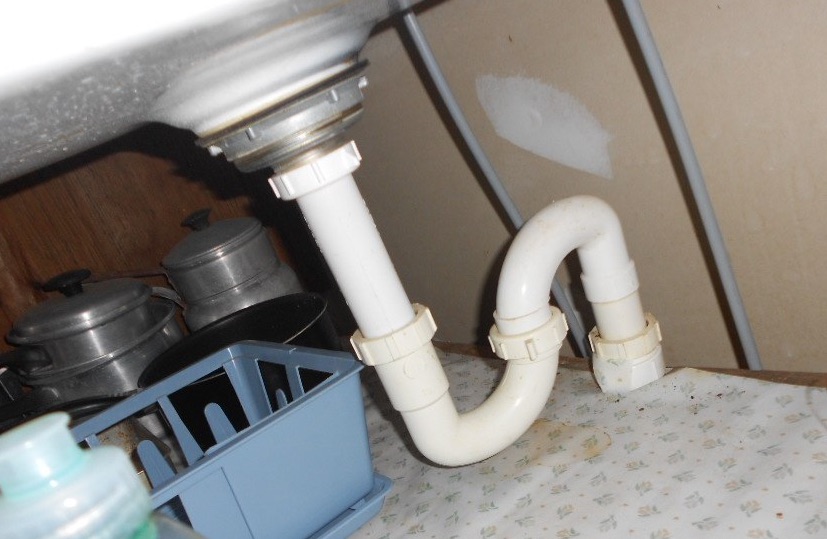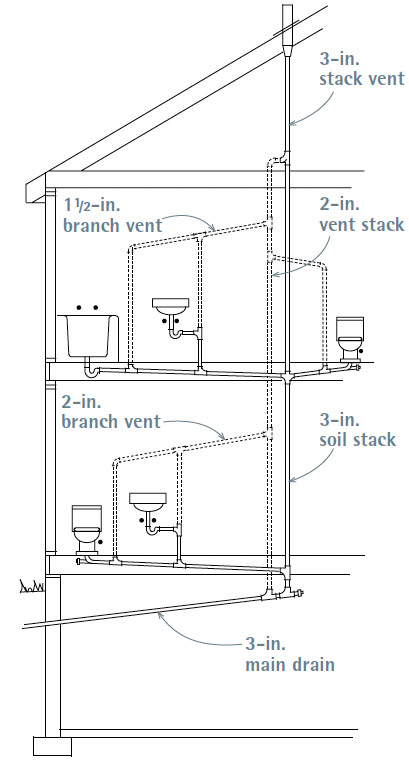How Adequate Ventilation is Crucial in Plumbing Systems
How Adequate Ventilation is Crucial in Plumbing Systems
Blog Article
This great article down below on the subject of What Is a Plumbing Vent and Why Is It Important is really enjoyable. Don't skip it.

Correct ventilation in pipes systems is typically forgotten, yet it is critical for preserving the functionality and safety of your home's plumbing. Air flow helps regulate atmospheric pressure, prevent the accumulation of harmful gases, and make sure the reliable removal of waste. In this guide, we will check out the relevance of appropriate pipes air flow, exactly how it functions, and the benefits it gives your pipes system.
Recognizing Air Flow in Pipes
Air flow in pipes refers to the network of pipelines that permit air to flow via the drainage system. These vents offer several objectives, including controling atmospheric pressure within the pipelines, stopping sewer gases from getting in the home, and helping in the smooth flow of wastewater.
Just How Air Flow Functions in Plumbing Solutions
Atmospheric Pressure Policy
Proper air flow maintains well balanced atmospheric pressure within the plumbing system. When water flows through pipelines, it displaces air. Without sufficient air flow, this displacement can develop negative pressure, causing slow drains or siphoning of water from catches, which can create unpleasant odors to permeate into the home.
Protecting Against Sewer Gas Accumulation
Among one of the most important features of plumbing vents is to prevent sewer gases, such as methane and hydrogen sulfide, from accumulating within the home. These gases can pose significant health and wellness risks and are very flammable. Vent pipes allow these gases to get away securely outside.
Assisting in Waste Elimination
Air flow aids in the effective removal of wastewater by avoiding airlocks in the drain system. When air can move freely via the vents, it allows water and waste to move smoothly with the pipelines, minimizing the threat of blockages and back-ups.
Types of Plumbing Vents
Key Heap Vent
The main stack air vent, additionally known as the air vent pile, is the key vent in a plumbing system. It prolongs from the primary drainpipe align via the roof covering, allowing gases to escape and fresh air to enter the system.
Branch Vent
Branch vents link to the major pile air vent and offer private components, such as sinks, bathrooms, and showers. These vents make sure that each component has appropriate ventilation to operate effectively.
Air Admission Valve (AAV).
An Air Admission Valve (AAV) is a one-way valve that allows air to go into the pipes system without the requirement for a conventional vent pipe prolonging with the roofing. AAVs are typically used in restorations or locations where mounting a standard air vent is impractical.
Signs of Poor Ventilation in Pipes.
Slow Draining Fixtures.
If your sinks, bathtubs, or commodes are draining pipes gradually, maybe an indicator of bad ventilation. Inadequate air circulation can produce a vacuum effect, making it hard for water to drain pipes appropriately.
Gurgling Sounds.
Gurgling noises originating from drains pipes are frequently an outcome of air being drawn via water traps as a result of adverse pressure in the pipes. This is a clear sign of inadequate air flow.
Undesirable Smells.
Sewer smells inside your home are a warning that your pipes system is not correctly aerated. This can imply that sewage system gases are not being sufficiently aired vent outside, causing possibly unsafe problems.
Usual Air Flow Blunders.
Poor Vent Sizing.
Utilizing undersized air vent pipelines can lead to poor air flow and pressure discrepancies in the system. It's essential to use vents that meet the particular requirements of your pipes system.
Improper Vent Positioning.
Positioning vents also much from the fixtures they offer can lower their efficiency. Proper positioning guarantees that air can move freely and successfully through the system.
Ignoring Code Needs.
Building ordinance offer specific standards for pipes air flow. Disregarding these codes can lead to a system that fails to function properly and might result in pricey repair work or carcinogen.
Advantages of Proper Ventilation.
Improved System Effectiveness.
Effectively aerated plumbing systems run much more effectively, with fewer blockages, faster draining, and less strain on the pipes. This efficiency extends the lifespan of the plumbing system.
Improved Air Top Quality.
By avoiding drain gases from entering your home, appropriate ventilation adds to better interior air high quality, making your living atmosphere healthier and much more comfortable.
Protecting Against Water Damages.
Adequate ventilation assists stop water from being siphoned out of traps, which can cause drain gases entering the home and creating water damages with time.
Actions to Make Sure Correct Air Flow.
Consulting Plumbing Codes.
Constantly speak with local pipes codes when creating or modifying your pipes system. These codes supply the necessary standards for proper airing vent and ensure your system fulfills security standards.
Regular Examination and Maintenance.
Normal evaluations can aid determine potential ventilation concerns before they end up being significant problems. Maintenance tasks, such as cleansing vent pipes and checking for blockages, are vital for maintaining the system in good working order.
Specialist Setup.
For brand-new setups or significant adjustments, it's a good idea to work with a specialist plumbing professional. They have the knowledge to make sure the ventilation system is properly developed and mounted according to code.
Verdict.
Correct ventilation is a vital component of any pipes system, ensuring that it works effectively and safely. By comprehending the value of ventilation, recognizing the indications of poor ventilation, and taking actions to preserve your system, you can protect against pricey concerns and protect your home's air high quality.
4 Things You Should Know About Your Plumbing Vents
What Plumbing Vents Are
Also called a vent stack, a plumbing vent is a vertical pipe attached to your drain line that runs through your roof. The plumbing vent pipe, or plumbing air vent, removes gas and odors from your plumbing system and allows fresh air to enter the pipes, helping the water to flow out of the drain pipes.
What Plumbing Vents Do
Plumbing vents have two basic functions. One of which is to allow unpleasant smelling wastewater and sewer gasses to escape your plumbing system instead of entering your home. Plumbing vent pipes are typically located on roofs, away from windows, to ensure the fumes exit the home completely.
The other function of the plumbing vent is to move fresh air into your plumbing system. This helps move water through every plumbing fixture in your house, like toilets and sink drains. Think of the way in which you need to let a little air into the bottle as you pour soda in order to make the drink flow smoothly.
Different Types of Plumbing Vents
True vent: This is the most common vent option. In simplest terms, a true vent is a vertical pipe attached to your drain line that exits through the roof. They often function as the main vent that other fixtures can connect to. Re-vent pipe or auxiliary vent: Attached to the drain line near specific plumbing fixtures, re-vent pipes run up and over to connect to the main vent. Common vent: Two plumbing fixtures installed on opposite sides of a wall are typically tied into the vent stack using something known as a sanitary cross. Wet vent: This venting option operates as a drain pipe and a vent at the same time. Wet vent drainage systems drain water from one fixture while venting the air from another. Although they’ve been used for over 100 years, wet vent systems have only recently been added to the plumbing code in many areas. If you’re planning on installing one in a bathroom remodel, make sure you check your local code prior to construction. Loop vent: For free-standing fixtures like kitchen island sinks, loop vents are ideal. These vent pipes run under the floor, rise from the P-trap, and create a loop inside the cabinet sink. Air admittance valve: An AAV is a one-way mechanical valve typically installed at the site of the plumbing fixture. AAVs allow venting to occur without having to tie into a larger venting system. They’re ideal for venting fixtures where you aren’t able to easily connect to an existing vent system. Common Plumbing Vent Issues
Although vent pipes typically don’t have water flowing through them, they’re still subject to many typical plumbing issues. For example, clogs are one of the most common problems associated with sewer vent pipes. If your vent pipe gets clogged, all of your plumbing fixtures tied into the vent stack will be affected.
A sink with a slow drain that bubbles and gurgles or a strong sewage smell around your toilet are both indicators that your toilet vent pipe is clogged. Because most vent pipes exit through the roof, old leaves, twigs or even a bird’s nest could be clogging the pipe.
Clogs in your vent pipe system cause a buildup of negative pressure, meaning that water won’t be able to flow out of your home very well. It’s similar to putting your finger over the opening of a straw to trap water inside. When you remove your finger, the water is able to flow out of the straw.
If you suspect you have any blockage in your vent, make sure you have a professional come examine the situation. Left unchecked, a blocked air vent can lead to other costly repairs, like leaks and sediment buildup.
Under Pressure
Pipe vents are essential aspects of a home’s plumbing system. Owning a home means learning about all sorts of things you never put much thought into before. But by understanding as much as you can about the important systems of your home, you can keep those budgets intact and those anxiety levels low.
https://www.homeserve.com/en-us/blog/home-improvement/plumbing-vents/

As a reader on Why Plumbing Air Vents Are Important, I was thinking sharing that excerpt was really useful. Are you aware of anybody else who is very much interested in the topic? Be sure promote it. We cherish reading our article about What Is a Plumbing Vent and Why Is It Important.
Visit Page Report this page